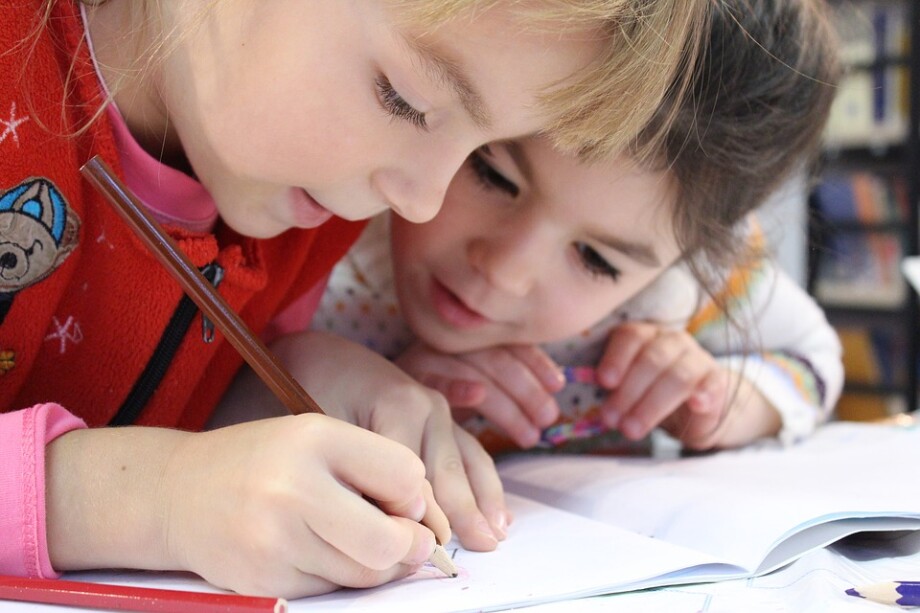Sometimes it happens you lack tasks to do and the lesson isn’t over yet. It’s essential to any teacher to have a filler or an extra task “up your sleeve” to fill in a class gap. A filler is a 3-10 minute activity, usually a game, that you can use at any stage of the lesson without long preparation. Moreover, fillers are often fun, motivating and engaging.
Below you will find 10 best fillers for very young learners.
1. Guessing game
One child thinks of or hides something or someone, e.g. if you’ve just had an “animal topic”, they think of or hide an animal. Others have to guess, asking yes/no questions. Alternative ways are to mime the word for others to guess or to draw it on the board, but with their eyes closed.
Or you can say “I spy with my little eye something brown” and children must guess, find and touch or call out what it is. You can make a leader board to write who guesses more words.
2. Snowball
This game is great for recycling new vocabulary. For instance, you’ve just learnt colours and want to give children more practice with them. You say a colour, have the child next to you repeat your colour and say another one and so on. You can also contextualize it to your topic, for example, to practise holiday words, you can say, “I’m going to the beach and I’m taking…” You can also use a ball to “pass” to choose whose turn it’s going to be. The ball can’t be stopped for more than 10 seconds.
This game consolidates the words taught and makes them stick in the long-term memory due to constant repetition.
3. True/False
Make a sentence about yourself or a puppet or any child from the group. For example, you’ve just presented “I like…”, you can say, “I like ice cream”. If learners think it’s true, they stand up (variations: jump, snap or run to the left side of the classroom). If they think it’s false, they sit down (variations: turn around, clap or run to the right side of the classroom). I like this game as it can be used for many topics and you can vary it. Students can raise cards, for example, red for “true”, blue for “false”. Or you can draw a “tick” for “true” and a “cross” for “false” on the board and they can run to the correct sign or point with a laser.
4. Red light / Green light
This filler is more about changing activities and having a break. Have children line up. When you say or show “green light”, play the music and have learners dance, move and so one. When you say or show “red light”, stop the music and all the children must freeze. Any child who moves is out. You can also incorporate action verbs or miming activities here. For example, when you play music, learners have to mime eating apples/bananas or miming an action verb.
5. Touch
This filler can also be adapted for different vocabulary topics. You call out a word and children run and touch it. For example, a colour — blue, children run and find something blue in a classroom. You can vary it with classroom objects or stick flashcards on any topic around the classroom.
6. Simon says
This is a classic game. When you say, “Simon says, “Stand up”, children stand up. If you say, “Stand up”, children do not do anything. You can change “Simon” on any other name: yours or a puppet. Or you can nominate a captain among children. You can also combine this game with the previous one “Touch”.
7. Dice
This filler can also be used with various themes, e.g. pets. Draw or stick flashcards to the board and number them from 1 to 6. Children roll the dice and have to mime/name/draw the animal they have, for example, they have 2, it’s a duck, they mime a duck or make a “quack” sound.
8. Bingo
Here you’ll have to prepare cards with pictures. Call out different words for the student to cross out if they have it. Or you can play a chant/song and children have to cross a word when they hear it.
9. Clap or snap
This filler works well with many topics. For example, you want to revise 1-10. Line up the students and have them count from 1 to 10 one by one. But they have to clap or snap for numbers, e.g. 3, 5 and 7. If they do not, they are out. When they count to 10, they start again, but have to say faster and so on. This can also be used for listening practice. Play a chant or a song with the target vocabulary, let’s say fruits and vegetables. When children hear a fruit, they clap, when they hear a vegetable, they snap. You can also divide students, for example, girls clap, boys snap. You can also change movements.
10. Telephone
Arrange students in a line. Whisper a word to the student very quickly, have this child whisper what he/she understands to the next students. It continues until the last child, he/she says the word aloud to the class. You say the original word. Then you go to the end of the line and the game starts again.






 Вероника Аветисян
Вероника Аветисян 
 Маргарита Аветисян
Маргарита Аветисян 


